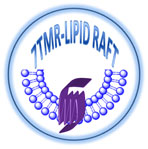Caveolae facilitate but are not essential for platelet-activating factor-mediated calcium mobilization and extracellular signal-regulated kinase activation
| Title | Caveolae facilitate but are not essential for platelet-activating factor-mediated calcium mobilization and extracellular signal-regulated kinase activation |
| Publication Type | Journal Article |
| Year of Publication | 2009 |
| Authors | Poisson, C, Rollin S, Veronneau S, Bousquet SM, Larrivee JF, Le Gouill C, Boulay G, Stankova J, Rola-Pleszczynski M |
| Journal | J Immunol |
| Volume | 183 |
| Pagination | 2747-57 |
| Date Published | Aug 15 |
| ISBN Number | 1550-6606 (Electronic)0022-1767 (Linking) |
| Accession Number | 19620302 |
| Keywords | *Calcium Signaling/immunology, Animals, Binding Sites/immunology, Caveolae/enzymology/immunology/*metabolism, Caveolin 1/*metabolism, Cell Line, Cell Line, Tumor, CHO Cells, Cricetinae, Cricetulus, Enzyme Activation/immunology, Extracellular Signal-Regulated MAP Kinases/*metabolism, Humans, Membrane Microdomains/immunology/metabolism, Peptide Fragments/metabolism, Platelet Activating Factor/*physiology, Platelet Membrane Glycoproteins/metabolism/physiology, Receptors, G-Protein-Coupled/metabolism/physiology |
| Abstract | Certain proteins, including receptors and signaling molecules, are known to be enriched in caveolae and lipid rafts. Caveolin-1, the major structural protein of caveolae, specifically interacts with many signaling molecules and, thus, caveolae and lipid rafts are often seen as preassembled signaling platforms. A potential binding site for caveolin-1 is present in the platelet-activating factor receptor (PAFR) sequence, and many downstream signaling components of PAFR activation preferentially localize in caveolae. The aim of this study was to investigate whether the PAFR was localized in caveolae/lipid raft domains and, if so, what would be the significance of such localization for PAFR signaling. In this study, we demonstrate that PAFR localizes within membrane microdomains, in close proximity to caveolin-1 in living cells, with potential interaction through a caveolin-1-binding sequence in the PAFR C terminus. Caveolin-1, however, is not essential for PAFR localization in lipid rafts. Disruption of caveolae/lipid rafts with methyl-beta-cyclodextrin markedly reduced PAF-triggered inositol phosphate production and cytosolic calcium flux, suggesting that PAFR signaling through the Galphaq protein was critically dependent on integrity of lipid rafts and/or caveolae. Interestingly, whereas in caveolin-1-expressing cells lipid raft disruption markedly decreased PAFR-mediated activation of the ERK/MAPK pathway, in cells lacking caveolae, such as leukocytes, lipid raft disruption had either the same inhibitory effect (Ramos B cells) or no effect (monocytes) on PAFR capacity to signal through the ERK/MAPK pathway. In conclusion, PAFR appears to localize within caveolae or lipid rafts in different cell types, and this location may be important for specific signaling events. |
| URL | http://www.ncbi.nlm.nih.gov/entrez/query.fcgi?cmd=Retrieve&db=PubMed&dopt=Citation&list_uids=19620302 |
